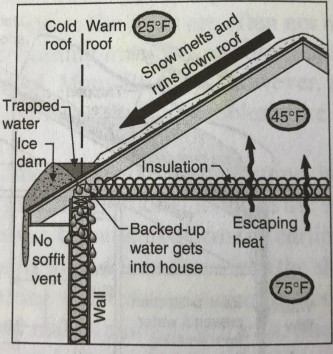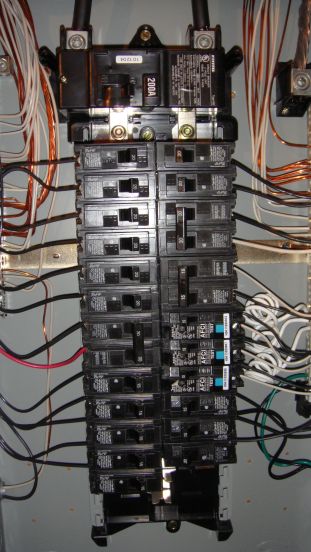You are ready to buy a new home. You have gone to the mortgage guy. You got all the papers you needed. You waited for an answer. They needed more paperwork? Seriously? I don’t know where my 3 year old W-2 is? Send in more information. Wait some more. You got the money! You are pre-approved. Yay! Lets celebrate with some drinks and go on Zillow for 4 hours! OK time to find a real estate agent. Which one though? Ok got one we are ready to look at houses. Where do we want to live? How many bedrooms? Can we have a garage? What about taxes? How much space will we need in the future? This weekend there are some open houses we can go to. How many houses did you look at? Five? Fifteen? This is the one we must have this house. Our agent says we need to get an offer in fast. Let’s do it. How much do we offer? Higher or lower? What is the market value? Will they accept our offer? The phone rings… they accepted your offer! Congratulations! Now what???
You have made all of these decisions and completed everything so far and it has been a long long process. Do not make a vital mistake and SKIP a Home Inspection. You have researched everything and talked with your agent about the house and you feel confident in your decision. Maybe there are a few issues that you have seen in the house that you know about and have a plan to fix or replace, maybe there are no issues that you can see. What if it’s a new house?
The home inspection is the most important part of the entire home buying process. Skipping this step can cost you major money and headaches down the road if there are any issues with the house you buy. A lot of times the small details that can indicate an issue are missed by the buyers and even the sellers that have lived in the home for a long time.
I will not speak for all Home Inspectors because they are all different and do things their own way. I can only tell you how I operate an inspection for my clients. I will get into different things that I look for in each home in separate blogs to come soon so for now I will just focus on what I do for each of my clients.
When you call me I will first ask you a few questions about yourself. Are you selling or buying? Congratulations you are buying a home! What can you tell me about it? If you can send over the listing that is the best and I can get you an accurate price quicker. If you don’t have the listing not a problem. I will just ask a few more questions and I can get you an estimate immediately.
I will then send you over a standard pre-inspection agreement for you to review and sign. Every client must read and sign this, it benefits all parties. This agreement covers the entire process of the home inspection. It states what I will and will not inspect and has a lot more information about the inspection process for you to learn about.
Finally we will schedule a date and time that works for you and your agent. I am very flexible with my scheduling and also schedule your time as quickly as possible. There are almost always “inspection clauses” written into the home buying agreement and it has a time limit on it. Each one is different but it is normally 7-14 days. That means you have that set amount of time to hire an inspector and get the inspection done. You can also have other professionals come in and look at the house in this time too. Maybe you want to update all of the floors and electrical fixtures after closing, you can have a contractor and electrician come in and give you an estimate during this time too.
At the time of your inspection we will review the agreement and go over the pricing. Once that is done and signed I work for you. I work for ONLY you. I do not work for your agent, or the listing agent. I will go through the entire house with you and answer any questions that you have. We will go from the exterior and move from the ground up, then move to interior and go from the basement to the attic and everywhere in between. You can ask as many or as few questions as you like. I will give you my honest opinion on everything. I will tell you like it is. If I don’t like the look of the fastenings on the deck I will tell you. If I really like your stand by generator or the extra insulation in the attic I will tell you that too. I will tell you the good, the bad and the ugly. I want you to know as much as possible about your potential new home before I leave.
I will not leave until I have seen everything necessary and have answered all of your questions. I have had agents in the past try and rush me along and finish early but like I said, I don’t work for them. I do my best to get each inspection done in 2-3 hours. Each house is different and each customer is different so there is no real set time for each inspection. Some go smoother than others and some might take a little longer.
I will take some notes and I will take hundreds of pictures. All of the information that I find during the inspection will be in your personal report that I will start working on as soon as I get back to the office. It takes a few more hours for me to finish it and then I will email it over to you, and your agent if you want as soon as it’s done. Your report can be long, sometimes a hundred pages or so, but it is all together in one easy to read PDF file. There is a table of contents so you can click on each system and jump to that part of the report. The most important issues will be at the end in the “General Summary”.
From here it is up to you and your agent to discuss any of the issues that may have come up in the report. Say for example that there is a leak in the attic or a faulty electric circuit branch. My report can be used in negotiations with the home owner. Do you want these issues fixed prior to closing? Or do you want to fix them yourself and have the cost deducted from the total price of the home? These are issues that your Real Estate agent will help you with. Reference back to the pictures in your Inspection Report for any repairs that are made so you can see the before and afters to ensure the work was done properly.
I am not done working for my clients when I email them over their report. I am available to answer any questions they may have anytime. There are so many things to look for in your new home that you might forget something and then remember it later. No problem, give me a call and we can talk about it. For example:
“Hey Riley, what is a ‘double tap’? It’s on page 62 of my report, I know we talked about it but can you tell me more?”
“Which way does my filter go on the furnace? I see the arrow but I forgot which way it’s supposed to point?
“My Radon air test results came back and it is high. What do I do now?”
I am available to help out anytime just give me a call or email. I will also do follow up inspection or just inspect an area that you are concerned with, just ask. For more information contact me at Knoxinspect.com


























